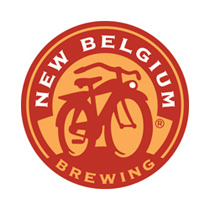Growing Inward
Of all the growing categories of the beverage business, craft beer is absolutely the hottest. The growth numbers — more than 12 percent in volume, 15 percent in dollars, for the second year in a row — are splayed all over this magazine and innumerable beer web sites. They present a strong contrast when matched up against conventional beer, just as the growth rate of the energy drink category has big soda company executives weeping in their sodas.
But the growth of craft beer has occurred in a way that the growth of energy drinks has not: craft is growing up, but it’s also growing in. The number of new breweries in the U.S. increased by 250 last year, and there were 915 in planning at the end of 2011. Brewery capacity is also expected to increase by at least another 10 percent, and many breweries are doubling or tripling their capacity to meet demand. Still, experts say that most of that new beer will go to the same regions, the same consumer set, as the breweries deepen their local connection.

That means the even though craft beer is now huge, craft beer’s brands are not. Look at the top 20 brands, and there’s an average share of 3.6; take out top brand Boston Beer — which has a share of 18.5, and the rest of the pie drops to 2.8. Take out Sierra, the next highest — at 11.2 and no brand has a double-digit share.
That means that craft beer has evolved into a national phenomenon with local legs.
For wholesalers aligned with the big beer companies, the numbers offer few clues as to which craft companies they should offer their limited, valuable space to when they know they could just throw a few more kegs of Bud onto the truck; for those who specialize in craft and specialty offerings, there’s still a weighty balancing act to account for the companies that are worth long-term commitments, and which ones will have trouble drawing consumer interest.
That diversity of brands presents a problem not just for distributors and retailers, but for brewers as well. For the brewers, the variety — and the sheer velocity of new companies entering the space — means that even as the category has grown, one brewer is easily substituted for another. Few have made themselves essential when it comes to building a portfolio. And if they stop being the flavor of the month locally, they have nowhere to go.
“Craft is kind of stuck in its own paradigm,” says Greg Owsley, the chief branding officer of New Belgium Brewing from 1996 to 2011. “Brewers feel the only way they can succeed is to be small, inventive, pastoral, but someone is going to have to break out of that.”
With the rapidly growing number of brewers and the high level of quality advances, the consumer is starting to have near-limitless access to good, high-end beer. But, Owsley says, if they don’t start improving their ability to transmit branding cues, they run the risk of being lost on the shelf.

That doesn’t mean that branding does not exist in craft beer. In fact, when measuring the intended effects of branding, the increase in consumer loyalty and identification with branded products, craft beer brands excel. The problem is that they excel only as far as the limits of that much larger brand they’re competing within: that brand is craft beer itself.
“There’s something about being associated with craft beer as a community that lends something else,” says Paul Gatza, Director of the industry trade group the Brewers Association. “It says you’re small, you’re part of craft. With other products, branding tries to differentiate. But with craft, the category is already leaning toward differentiation, while you’re also part of a community, a community that represents small, traditional, unique, and somewhat cool.”
(Unless, of course, you trespass, by succeeding. For example, no less a brewer than Sam Calagione, the founder of legendary craft brewer Dogfish Head (share: rounded up, it’s 1 percent) recently decried the tendency of the category to eat its young as they become better known, wading into a set of online forums to complain that posters “still spend their time knocking down breweries that dare to grow.”
“Beer geeks are having a bit of social validation right now,” Owsley says, “But I see the culture getting a bit oppressive. Consumers don’t want to have to read the Beer Advocate every time they order a freaking beer. They want to go into places and feel like they can win every time they go in.”)
Here’s the not-so-hidden secret of craft brewers, derived from extensive interviews and discussions with brewers, distributors, and other members of the industry: for many of them, just being part of that community is enough.
But that community is likely to be subject to the laws of the marketplace, no matter how philosophically driven it might be. Nanobreweries become microbreweries. Brewpubs start to name beer for radio shows, and soon enough it’s in six-packs. Investors want to see growth and returns. The dynamics of the category might mean that some companies ignore the instinct to “grow or die”, but all of them will, and that can cause companies to have to make hard choices in the long term.
“I love the psychology for most of these guys,” Ricci says. ”I love why they’re in the business, why they love what they do, why they do what they do, and what’s important to them. They’re not interested in becoming the next Sierra Nevada. That’s just a massive pain.”
